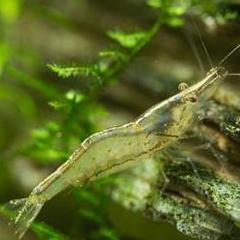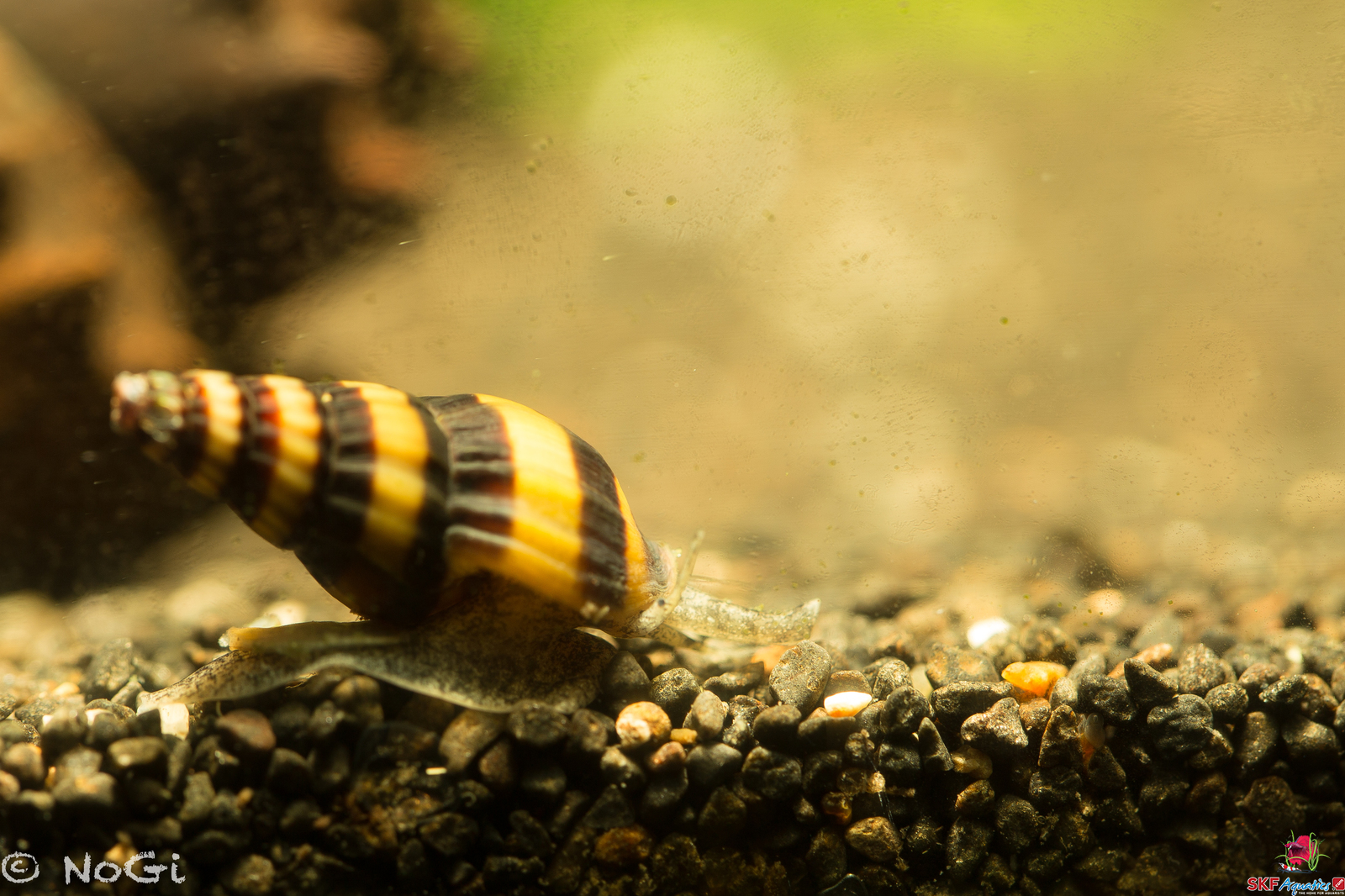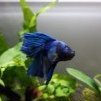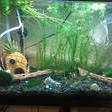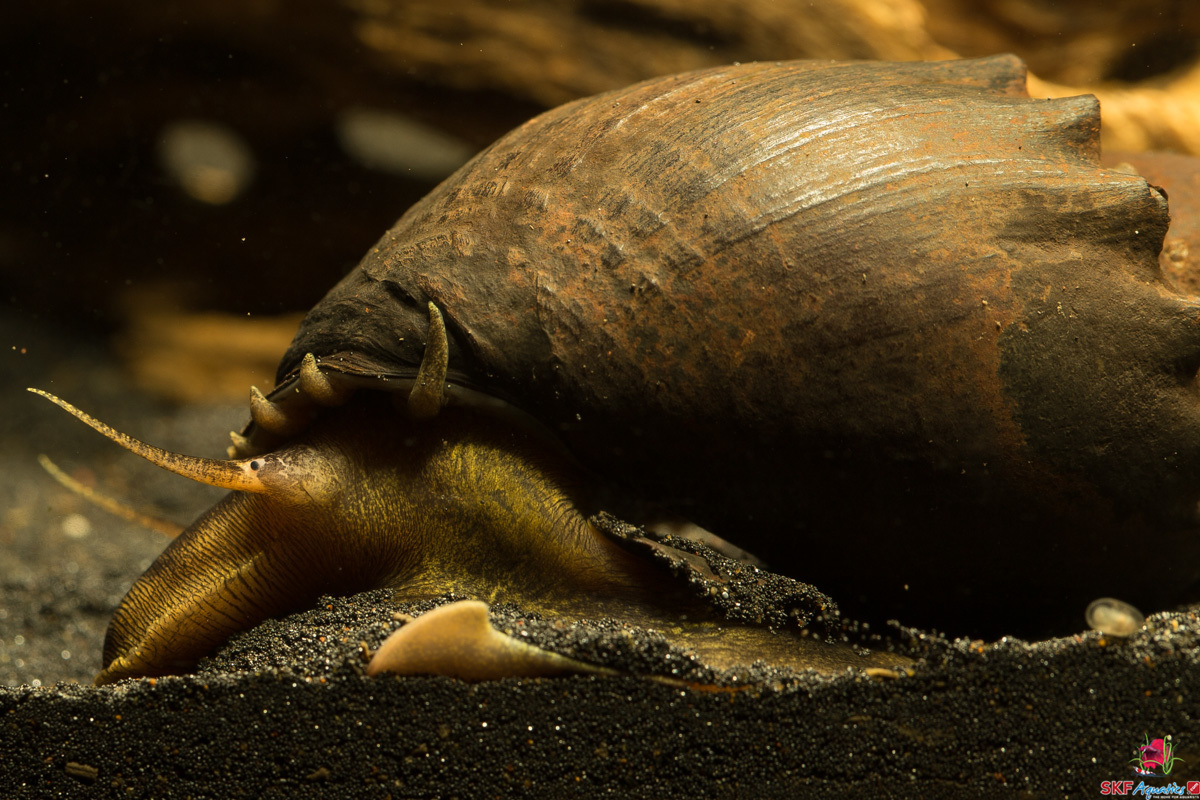Search the Community
Showing results for tags 'snail'.
-
I've had these snails in my tank for over a year and I don't know what kind they are. They're incredibly hardy and unknowingly got them attached to some plants I got at petsmart. If anyone can ID them please help me! I live these guys and they're the only snails that have survived living with my goldfish.
- 2 replies
-
- 1
-

-
- snail
- freshwater
-
(and 2 more)
Tagged with:
-
Clea helena is one of the most sought-after species in the aquarium business as it has the capability to hunt down pest snails; thus, helping solve the snail infestation concerns in fish tanks. Except for this, they are a peaceful community tank resident. Keep reading to know more about the assassin snail. Appearance Their shells are conical and are prominent because of their yellow and dark brown stripes – adding a splash of color inside the fish tank. Unlike other species, it is not possible to tell which a female assassin snail is and which a male is. They breathe by sticking out their siphon – like other snails. Clea helena grows as large as 0.5 inch or 1.3 cm. However, there were reports of finding bigger snails. As the large snails age, they begin to lose the tip of their shell. Natural Habitat Assassin snails are found in Southeast Asia and are native to Indonesia, Malaysia and Thailand. As freshwater aquatics, they occupy small bodies of water like streams and ponds. They prefer to live in areas where there are sandy or muddy substrates. Thus, if you are thinking about placing them in an aquarium, you should be able to reproduce a habitat like these conditions. Care It is so easy to look after an assassin snail. Water parameters are not essential, but to best care for them, keep them in water with medium hardness (pH 6.5-7.5). Their appearance may seem to point out that they move slowly but the truth is that they move quickly on any surface. Anyone can notice this particularly when they are hungry – and after they are fed as they disappear immediately. Feeding They eat other species of snails and worms, but they also devour anything they can find – including decaying fish and other small or soft-bodied invertebrates. Because of this, they do not give aquarists like you a hard time feeding them. If in case the tank has a significant population of snail, then you have nothing to worry about feeding them. Other aquarists feed them with brine shrimp, frozen blood worms and others. Breeding Some snails contain both the female and male reproductive organs. When they mate, they can produce eggs or young. However, these assassin snails are born a female or a male. Because you can’t tell their sex, buy 5 or 6 of them so you can at least be sure that you will have a male and a female. They mate for about 3 to 5 hours before they separate. Shortly thereafter, the female assassin snail will lay eggs (up to 4). These eggs, in a gelatinous square with a yellow centre appearance, emerge in a straight line. Feed them meaty food as it helps in good reproduction. Lifespan Clea helena can live around two years, but make sure that the aquarium is well-maintained and they can easily exceed this lifespan. Sources Clea helena (assassin snail) Clea helena Wikipedia Image Sources PKMousie Flickr cc
- 1 review
-
- 3
-

-
- clea helena
- snail
-
(and 1 more)
Tagged with:
-
Hello! I'm new here and not sure if this is the way to ask questions or not so please let me know if I'm meant to do it some other way. I recently received 3 nerite snails last Wednesday and two were DOA (dead on arrival). Actually, there wasnt even anything inside the two shells!! One however, was alive but in bad shape as its shell was not in good condition so I am going to provide it with calcium powder soon. I've read that they take a little time to adjust to new environments but the little guy hasnt moved since he arrived. I gently tugged on his trapdoor and he resisted so I assume he is alive as he also doesn't smell rotten. I've tried putting kale or algae wafers under him but nothing ): Does fluval stratum substrate have copper in it because I've heard that they are sensitive to copper and that is the substrate I am using which I didnt even think about! I was also wondering if there were any Aussie sellers here that have any of the black nerite snail variety? I heard that they are legal here but please correct me if I am wrong. So sorry for the long post.. any response would be greatly appreciated! ?
-
Clea helena is one of the most sought-after species in the aquarium business as it has the capability to hunt down pest snails; thus, helping solve the snail infestation concerns in fish tanks. Except for this, they are a peaceful community tank resident. Keep reading to know more about the assassin snail. Appearance Their shells are conical and are prominent because of their yellow and dark brown stripes – adding a splash of color inside the fish tank. Unlike other species, it is not possible to tell which a female assassin snail is and which a male is. They breathe by sticking out their siphon – like other snails. Clea helena grows as large as 0.5 inch or 1.3 cm. However, there were reports of finding bigger snails. As the large snails age, they begin to lose the tip of their shell. Natural Habitat Assassin snails are found in Southeast Asia and are native to Indonesia, Malaysia and Thailand. As freshwater aquatics, they occupy small bodies of water like streams and ponds. They prefer to live in areas where there are sandy or muddy substrates. Thus, if you are thinking about placing them in an aquarium, you should be able to reproduce a habitat like these conditions. Care It is so easy to look after an assassin snail. Water parameters are not essential, but to best care for them, keep them in water with medium hardness (pH 6.5-7.5). Their appearance may seem to point out that they move slowly but the truth is that they move quickly on any surface. Anyone can notice this particularly when they are hungry – and after they are fed as they disappear immediately. Feeding They eat other species of snails and worms, but they also devour anything they can find – including decaying fish and other small or soft-bodied invertebrates. Because of this, they do not give aquarists like you a hard time feeding them. If in case the tank has a significant population of snail, then you have nothing to worry about feeding them. Other aquarists feed them with brine shrimp, frozen blood worms and others. Breeding Some snails contain both the female and male reproductive organs. When they mate, they can produce eggs or young. However, these assassin snails are born a female or a male. Because you can’t tell their sex, buy 5 or 6 of them so you can at least be sure that you will have a male and a female. They mate for about 3 to 5 hours before they separate. Shortly thereafter, the female assassin snail will lay eggs (up to 4). These eggs, in a gelatinous square with a yellow centre appearance, emerge in a straight line. Feed them meaty food as it helps in good reproduction. Lifespan Clea helena can live around two years, but make sure that the aquarium is well-maintained and they can easily exceed this lifespan. Sources Clea helena (assassin snail) Clea helena Wikipedia Image Sources PKMousie Flickr cc View full article
-
- 2
-

-
- snail
- assassin snail
-
(and 1 more)
Tagged with:
-
Hi guys, I got some plants for my shrimp aquarium and I noticed some tiny snails on them. I didn't pay attention but now I see they grew a lot and they are quite many. Do you think they could be a threat for the shrimp? Attached see a picture of two of them (Not sure what they are doing, the one of them is too small to mate I guess. But if they do I'm gonna have even more snails). Thanks, Dimos
-
Spiny Marsh Snail The Spiny Marsh Snail is an Australian native that is rarely found in the trade. This is a shame as it has an interesting shell shape and is well suited to aquarium life, providing a few simple conditions are met. The Spiny Marsh Snail was first described by Linneaus in 1758 as Helix amarula, with a subsequent remaining of the genus to Melania in 1822, and finally to Thiara in around 1943. It is found from the east coast of Africa, through Madagascar, north to the Philippines, through the Solomon and other Pacific Islands, and along the north-eastern coast of Australia (See Schutt & Glaubrecht, 1999 for a global distribution map). Given this widespread distribution, it is surprising that its distribution in Australia is limited. It is found from the Bloomfield River (south of Cooktown) to approximately 100km south of Cairns. Thus it is limited to around 6 major tributaries. The Spiny Marsh Snail is found in the lower freshwater sections of rivers, generally just above the tidal range. It is probably tolerant to low levels of salt as it would be exposed to brackish conditions in drought years, and therefore may be suitable for brackish aquaria. This requires further investigation. In its natural habitat, the Spiny Marsh Snail is found amongst rocks and pebbles, but also sandy areas, which is where I found them in the Johnstone River. In aquaria, they regularly bury themselves, especially when exposed to bright light. However in low light, or if the tank is densely planted or shaded, they are happy to move on top of the substrate and even climb the walls. This makes them useful for removing dead spots in substrates, but may mean they could dislodge plants in heavily planted aquaria, but I have not kept them under these conditions – something to watch for. I have noticed they are particularly active at night and may graze algae from the glass during this time. I've seen no indication that it eats plants, and indeed plants are generally absent from its natural habitat, other than Vallisneria or Aponogetons. They happily eat prepared foods (shrimp/fish food) as well as some greens (cucumber/zucchini). However, they seem to spend most of their time grazing. The Spiny Marsh Snail grows to a maximum size of approximately 50mm, perhaps slightly larger. From what I've seen, they are fairly slow growing and long lived. This makes them excellent candidates for aquaria, because unlike other pest snails, it makes it easier to control their numbers. Indeed breeding in aquaria is unlikely because it is thought the Spiny Marsh Snail releases planktonic larvae that move into the brackish/salty areas of rivers before migrating back up the river to settle. However, the true breeding habits of this snail are still unknown and present a challenge for aquarists. Nevertheless, these characteristics make it unlikely that the Spiny Marsh Snail would ever be a pest in aquaria. One condition that seems to be an absolute must for this snail is that pH needs to be 6.5 or above. In acidic conditions (pH < 6.0), the shell dissolves and the snails refuse to come out of their shells. If your snails are not active, check your pH. That said, this doesn't mean that they require lots of dissolved minerals (e.g. calcium carbonate). The TDS of the Johnson River where I found these was only 28 ppm at the time, so Spiny Marsh Snails may be the perfect tankmates for Neocaridina shrimp (cherries) and Australian native shrimp, but less so for Caridina (crystals, bees, etc.). So if you are after a snail that is good looking, hardy, a good algae eater, turns over the substrate, easy to feed, won't bloom into a pest population, is native and presents a breeding challenge, I highly encourage you to track down some Spiny Marsh Snails. Why not try a biotope tank with Vallisneria or Aponogetons and Caridina gracilirostris? Some additional material worth reading. Field trip to Johnson River, Queensland Australia with habitat description and pictures. http://www.naturkund...brecht_1999.pdf Atlas of Living Australia – shows the collection points of Thiara amarula in Australia. http://bie.ala.org.a...e-f394430ec676#
-
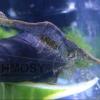
New Library Article - Thiara amarula - Spiny Marsh Snail
fishmosy posted a topic in Anything Forum Related
Thiara amarula Spiny Marsh Snail The Spiny Marsh Snail is an Australian native that is rarely found in the trade. This is a shame as it has an interesting shell shape and is well suited to aquarium life, providing a few simple conditions are met. The Spiny Marsh Snail was first described by Linneaus in 1758 as Helix amarula, with a subsequent remaining of the genus to Melania in 1822, and finally to Thiara in around 1943. It is found from the east coast of Africa, through Madagascar, north to the Philippines, through the Solomon and other Pacific Islands, and along the north-eastern coast of Australia (See Schutt & Glaubrecht, 1999 for a global distribution map). Given this widespread distribution, it is surprising that its distribution in Australia is limited. It is found from the Bloomfield River (south of Cooktown) to approximately 100km south of Cairns. Thus it is limited to around 6 major tributaries. The Spiny Marsh Snail is found in the lower freshwater sections of rivers, generally just above the tidal range. It is probably tolerant to low levels of salt as it would be exposed to brackish conditions in drought years, and therefore may be suitable for brackish aquaria. This requires further investigation. In its natural habitat, the Spiny Marsh Snail is found amongst rocks and pebbles, but also sandy areas, which is where I found them in the Johnstone River. In aquaria, they regularly bury themselves, especially when exposed to bright light. However in low light, or if the tank is densely planted or shaded, they are happy to move on top of the substrate and even climb the walls. This makes them useful for removing dead spots in substrates, but may mean they could dislodge plants in heavily planted aquaria, but I have not kept them under these conditions – something to watch for. I have noticed they are particularly active at night and may graze algae from the glass during this time. I've seen no indication that it eats plants, and indeed plants are generally absent from its natural habitat, other than Vallisneria or Aponogetons. They happily eat prepared foods (shrimp/fish food) as well as some greens (cucumber/zucchini). However, they seem to spend most of their time grazing. The Spiny Marsh Snail grows to a maximum size of approximately 50mm, perhaps slightly larger. From what I've seen, they are fairly slow growing and long lived. This makes them excellent candidates for aquaria, because unlike other pest snails, it makes it easier to control their numbers. Indeed breeding in aquaria is unlikely because it is thought the Spiny Marsh Snail releases planktonic larvae that move into the brackish/salty areas of rivers before migrating back up the river to settle. However, the true breeding habits of this snail are still unknown and present a challenge for aquarists. Nevertheless, these characteristics make it unlikely that the Spiny Marsh Snail would ever be a pest in aquaria. One condition that seems to be an absolute must for this snail is that pH needs to be 6.5 or above. In acidic conditions (pH < 6.0), the shell dissolves and the snails refuse to come out of their shells. If your snails are not active, check your pH. That said, this doesn't mean that they require lots of dissolved minerals (e.g. calcium carbonate). The TDS of the Johnson River where I found these was only 28 ppm at the time, so Spiny Marsh Snails may be the perfect tankmates for Neocaridina shrimp (cherries) and Australian native shrimp, but less so for Caridina (crystals, bees, etc.). So if you are after a snail that is good looking, hardy, a good algae eater, turns over the substrate, easy to feed, won't bloom into a pest population, is native and presents a breeding challenge, I highly encourage you to track down some Spiny Marsh Snails. Why not try a biotope tank with Vallisneria or Aponogetons and Caridina gracilirostris? Some additional material worth reading. Field trip to Johnson River, Queensland Australia with habitat description and pictures. http://www.naturkund...brecht_1999.pdf Atlas of Living Australia – shows the collection points of Thiara amarula in Australia. http://bie.ala.org.a...e-f394430ec676# View full article


